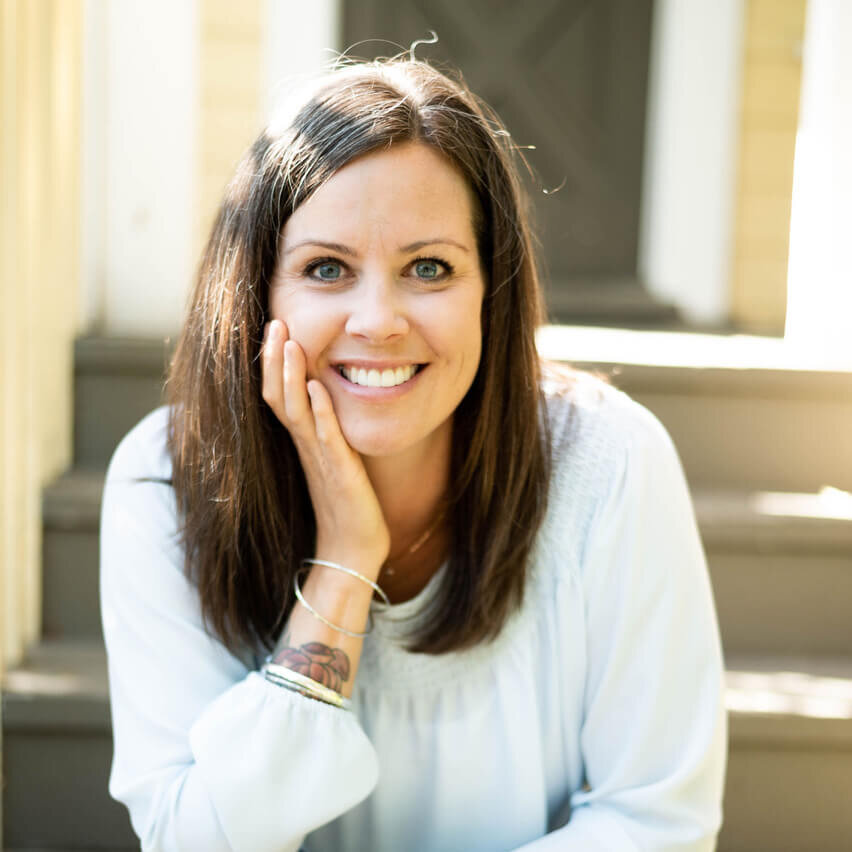On today's blog we are sitting down with Rachael Pasemko, Child Therapist with Lighthouse Therapy in Kamloops B.C. Rachael is a registered social worker, clinical counselor, and play therapy supervisor. She has been a therapist for 10 years now! (Wow, Congrats Rachael!)
My knowledge of Play Therapy was very limited prior to our discussion, but I understood that open-ended toys played a large role in the approach, so I was very eager to chat with Rachael and learn more about it. Let's cut to the chase shall we?

What is Play Therapy?
Play therapy is an approach to support children who are having difficulties, whether they have experienced a trauma, a loss in their lives, anxiety, or challenging behaviours that adults in their life can not make sense of.
What happens in a Play Therapy session?
Rachael's general method is non-directive, which is where children will come in and explore the room their way. They choose what they want to do and what toys they want to play with. There is meaning behind every toy a child chooses. They choose to play in a way that communicates what they are feeling, whether that's processing something difficult that has happened in their life, or preparing for something that they may be nervous about, Play Therapy help's them make sense of their world.
This behaviour comes from the right side of the brain. The left side is responsible for the ability to vocalize feelings, however children have a hard time with this form of communication. The right side takes over when children share through symbols and metaphors and make up stories about their experiences and feelings.
At times, she uses the directive approach where she will choose and facilitate the activity, but ultimately the child will take over and share in their own way.
What ages are best suited for Play Therapy?
The best ages for Play Therapy is between 4 to 12 years old. Once a child turns 4, there's a developmental shift and sense of self that occurs. This change enables them to better reflect thoughts, emotions, and feelings.
What toys are used in Play Therapy?
Rachael uses open-ended inspired toys to leave the play and narrative up to the child. Some examples are:
Sand Therapy with figurines - children choose figurines they are drawn to and make their own world in the sand
Folkmanis Puppets - help facilitate conversation by having a barrier or representative character
Other open-ended toys include board games, arts and crafts, and essentially anything else they are interested in.
How can parents facilitate this approach in a home setting?
It's important to make notes of shifts in behaviours such as trouble sleeping, trouble eating, and/or difficulty dealing with stress.
Rachael coaches and works with parents so they can practice these methods at home. She'll have parents participate in play with their child by asking and giving them time to reflect on their expressions, while not overwhelming them.
If you want to learn more, or would like to contact Rachael, you can check her out on Instagram at:
or her website www.rachaelpasemko.com
Make sure you're following @firetheimagination on Facebook and Instagram for more updates!
#canadianmom #canadianmama #canadianmoms #canadianmommyblogger #imaginativeplay #woodentoys #naturebasedlearning #canadianinfluencer
#candianshop #openendedtoys #openendedplay #openended #montessoriactivity #montessoritoddler#mandalalove #mandaladesign #montessorikids
#montessoriactivities #montessoribaby #montessoriinspired #montessoritoys #montessorichild #montessorimaterials #mamahood #momsofinsta
#mothersofinstagram #worldoflittles #grapat #grapattoys #waldorfinspired #montessoriactivities #childtherapy #playtherapy